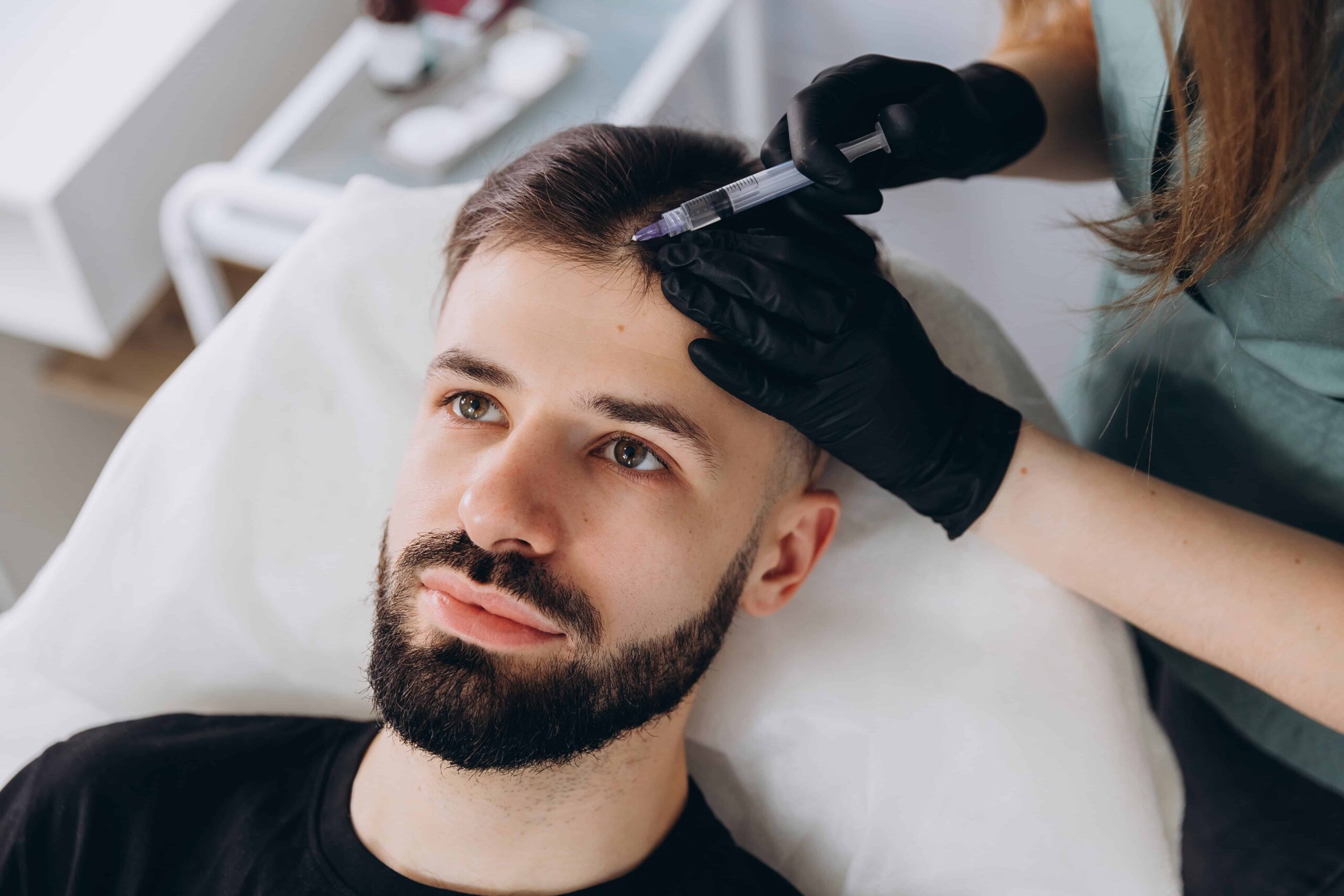When you look in the mirror and see that your hair is thinning, you may think it’s time for a haircut. But if you aren’t careful and don’t take care of your hair, those thin spots could be just the beginning. Eventually, they could turn into bald patches all over your head—and there could be no turning back.
Hair loss or thinning affects men and women. Statistically, 40% of men lose their hair by age 35, while 80% of women face hair loss issues by 60. Although it’s normal to shed up to 100-200 hairs per day, it’s essential to keep a tab on your hair growth and loss. So, before you judge or misjudge your hair, these early-warning signs will help you decide if you need a hair restoration procedure or not.
The Basics: What Is Hair Restoration Procedure?
A hair restoration procedure is a surgical procedure that involves the use of hair transplantation techniques to restore hair in areas of thinning or baldness. Hair transplant consultants or surgeons do this cosmetic procedure in two ways:
- Follicular Unit Strip Surgery (FUSS): This is the most common procedure doctors use. The doctor extracts hair follicles from the back of your head and implants them in areas with baldness or thinning. FUSS is also known as strip surgery.
- Follicular Unit Extraction (FUE): This newer technique allows doctors to transplant individual hair follicles. FUE is also known as punch surgery because it involves removing small plugs of skin, each containing one or more follicular units, from the back of your head and implanting them in areas where you want to grow new hair.
Early-Warning Signs Of Critical Hair Loss In Men
If you’re a man and notice that your hairline is receding or if the hair on top of your head is thinning out significantly, this can be an early warning sign of critical hair loss in men. Another sign of critical hair loss in men is when they start losing their frontal area, which includes the forehead and temples. If you notice large bald spots on both sides of your forehead and temple areas, this could indicate you need a surgical procedure immediately to restore lost volume.
In a nutshell, the following signs may suggest the need for a hair restoration procedure:
- A receding hairline
- Hair loss at the crown of your head
- Thinning hair on top of your head
- Baldness in the front of your scalp, not just in the back
- Appearing older than you feel
Early-Warning Signs Of Critical Hair Loss In Women

When it comes to signs of critical hair loss in women, the symptoms are essentially the same as in men. Like men, women tend to lose more hair than they do when they’re younger and healthier. Additionally, because women’s hormones fluctuate throughout their lives while experiencing other physical changes such as puberty, pregnancy, and menopause—which can lead to increased stress levels—this can also affect their hair’s health.
Many believe that genetics play a role in determining if someone will experience critical baldness later in life. However, many studies have shown this isn’t always true; multiple factors contribute to the onset of female pattern baldness (FPB). The AR genes may be responsible for most cases; however, lifestyle choices like dieting or smoking have been shown to cause FPB too.
In summary, keep an eye on the following signs as they could indicate your need for a hair restoration procedure:
- A receding hairline
- A thinning crown
- A large bald spot on the top of the head
- Losing more hair than normal, or at a faster rate than normal
- Hair is thinning at the crown or front of the scalp
- Hair loss is asymmetrical, meaning that it is more severe on one side than on the other
- Hair loss is sudden, with no prior pattern of thinning over time
Why Go For A Hair Restoration Procedure?
Most people without hair don’t like it, and they’ll do anything to get their hair back. Hair restoration surgery is one of the most popular procedures in the world, and for a good reason: it works! Hair transplant surgery can treat male pattern baldness, female pattern baldness, alopecia areata (an autoimmune disorder characterized by patchy hair loss), scarring alopecia, and even burn victims who have lost their eyebrows or eyelashes.
Scientists designed hair transplants to restore your natural look by re-implanting existing hair follicles from a donor area onto your scalp where you need them most. Aside from look improvement, they can boost confidence. But before you get down into it, you should understand the risks and complications. You’re advised to consult with a specialist for better results.
Conclusion
Hair restoration is the art of re-growing your hair with the help of a hair transplant surgeon. It helps treat hair loss problems like male pattern baldness, female pattern baldness, traction alopecia, scarring alopecia, and other forms of hair loss. The best way to determine if a hair restoration procedure is right for you is to pay attention to early warning signs about your hair. After that, consult with a specialist. They’ll assess the severity of your condition and recommend treatments.

